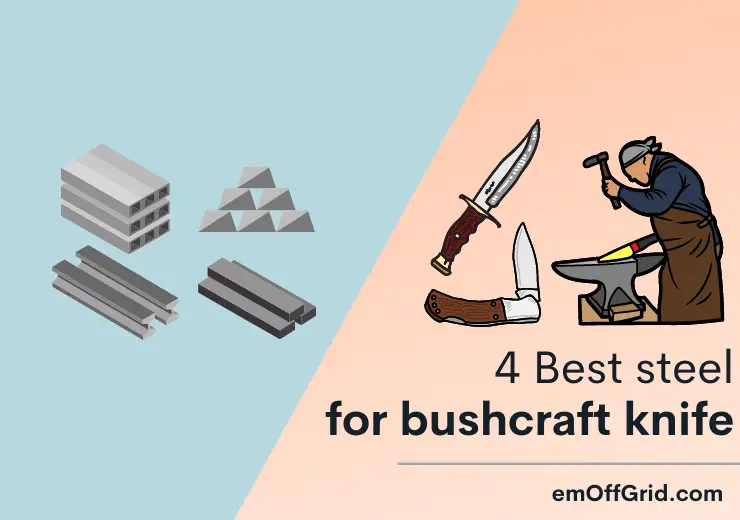Bushcraft knives, what are they made of? There are 4 best durable and wear-resistant steel for a bushcraft knife. They have the properties that make these knives versatile and ideal for outdoor use.
Alloy steels, stainless steels, and carbon steels are the most common blade materials. Different grades of stainless steel exist, but only 440 and 154Cm CPM are preferred for making knife blades.
Read on to know which of 4 Best steel for bushcraft knife. We will review each material, including its pros and cons.
Contents
Why Do You Need Steel for a Bushcraft Knife?
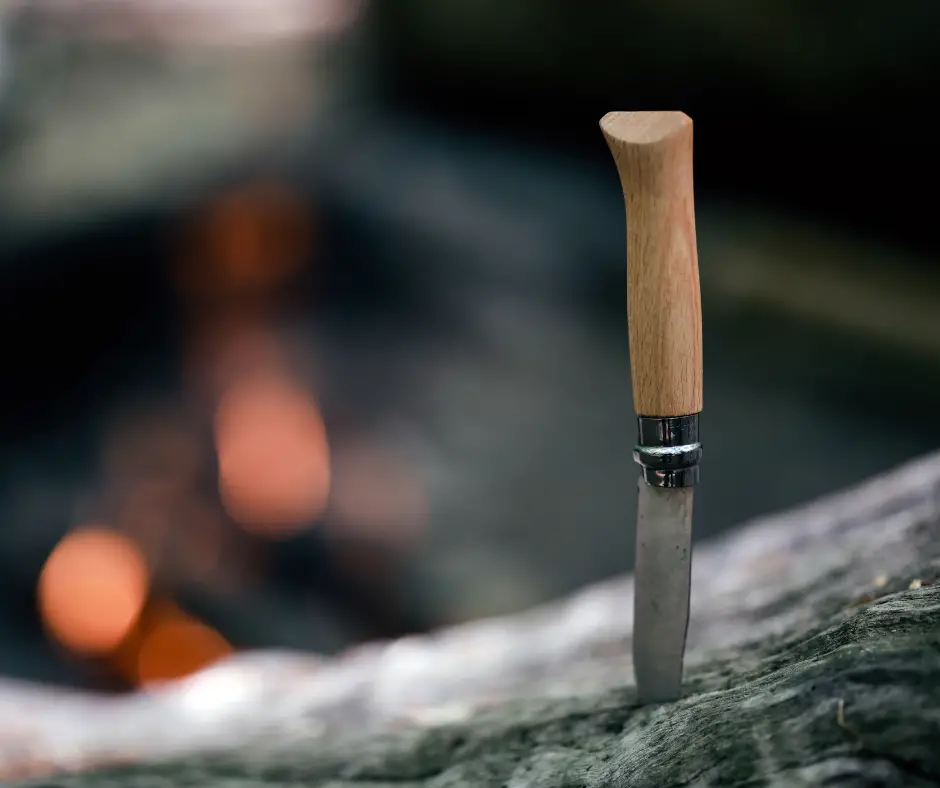
When choosing a bushcraft knife, its blade material is the primary factor. The material determines its hardness, toughness, corrosion resistance, and wear resistance. Steel is used because it possesses all these good properties.
A stainless-steel blade is the best option if you want a bushcraft knife that withstands corrosion. You never worry about rust when it gets into the water. So, it offers you the best choice for durability. However, sharpening a stainless-steel blade bushcraft noise is challenging.
Buyer’s Guide: What to Look for in a Good Steel?
Are you looking for a good bushcraft knife? You cannot buy just any knife you find in the market for this purpose. To get the best value for your money, you should consider hardness and toughness, carving capabilities, and ease of sharpening.
These factors are a must, even if you want to buy a blade material and do the rest of the work yourself. Let’s get the details in this buying guide!
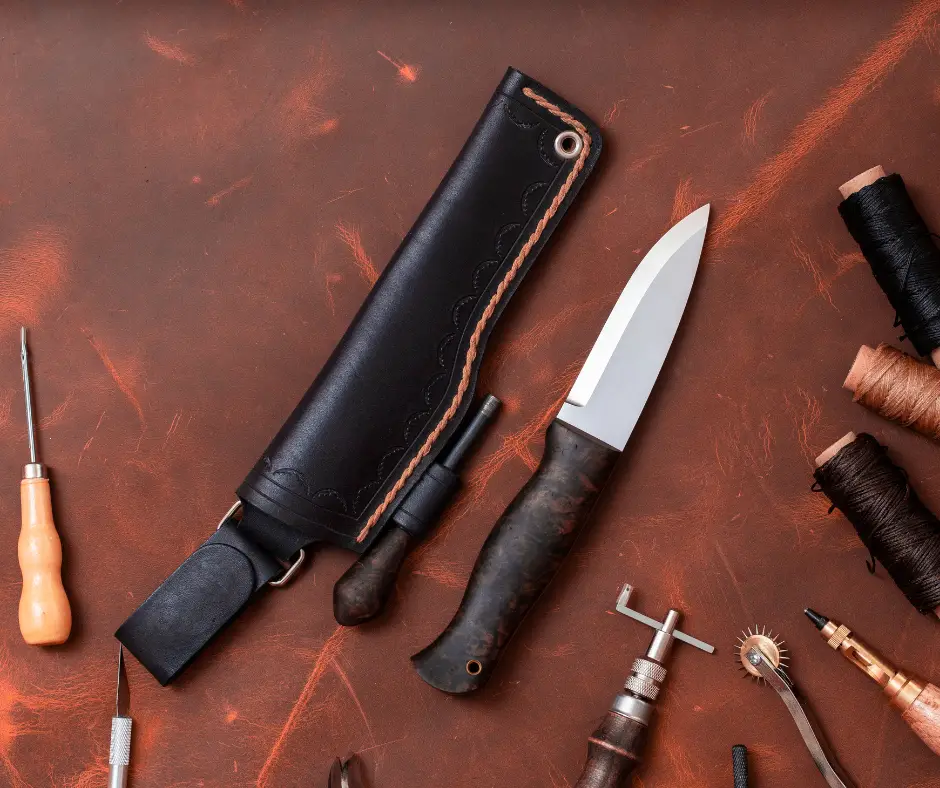
Hardness and Toughness
The steel hardness is how easy the steel bends or dents. This is the primary factor to consider if you want to have a custom-made bushcraft knife. It has to be hard enough to get the thinnest edge you want. And at the same time, it has to withstand the regular use you will put it to.
The toughness of steel is how easy it breaks or how far it can withstand bending forces before snapping off. This factor is crucial if your knife gets stuck in a knot in a log or when using it. It should not be brittle to easily snap or too malleable to easily bend when in use.
Corrosion-Resistant (Stainless) and Wear-Resistance
This second factor is self-explanatory. Bushcraft knives are exposed to water and other climatic conditions. These can induce rusting or degradation, which shortens the lifespan.
You need a bushcraft knife blade that can resist corrosion and does not wear out. One that wears off often requires frequent sharpening, which consumes time. So, you should trade-off carefully to get the best blade material for the intended use.
Carving Capabilities
When it comes to choosing a steel for your bushcraft knife, the ability to carve is an important consideration. A good bushcraft knife should be able to handle a variety of carving tasks, from whittling wood to shaping and smoothing bark.
For this reason, many bushcraft enthusiasts prefer steels that are easy to sharpen and hold an edge well.
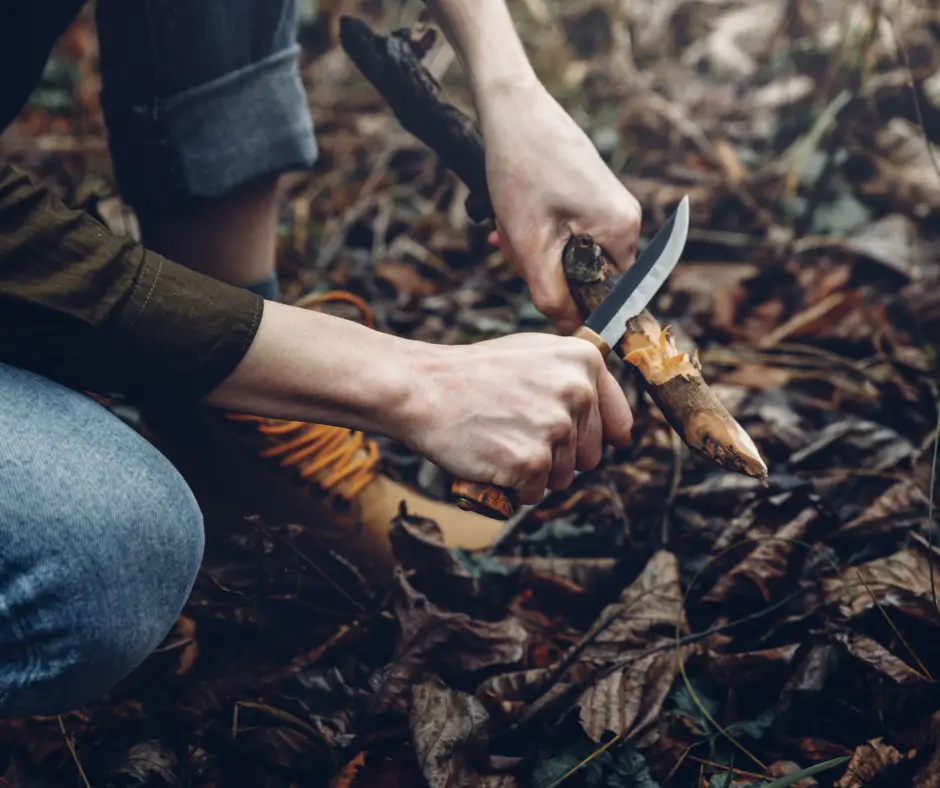
However, some steels are simply better suited for carving than others. The carving capabilities of steel make it ideal for use in artistic works. You need this to easily design your bushcraft knife in the shape you want by cutting or scrapping away metals you don’t want.
So, consider the type of carving you’ll be doing and choose accordingly.
Easy to Sharpen
Bushcraft knives and other cutting tools blunt out over time. Regular use wears off some materials from the cutting edge. When that happens, you will need to resharpen it to continue using it.
Different steel grades have varying degrees of hardness. That means the ease of sharpening is not the same. However, you need the best bushcraft knife that you can easily sharpen.
4 Best Durable and Wear Resistant Steel for Bushcraft Knife
The primary factors to consider for a bushcraft knife are durability and wear resistance. That depends on the type or grade of steel. Steel is usually infused with other materials to improve its properties for specific uses.
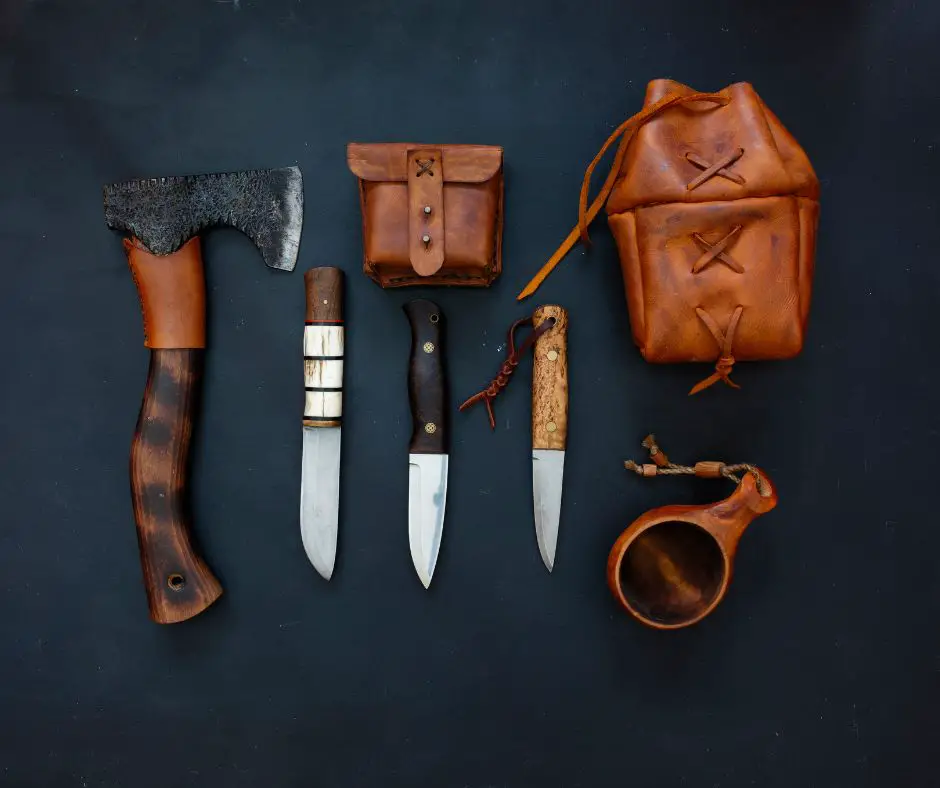
Different grades for making bushcraft knives exist. But four are the commonly used ones. We will summarize their properties in the table below and discuss them in detail later.
| Steel grade | Hardness And Toughness | Corrosion-Resistant (Stainless) | Wear-Resistance |
| Alloy Steel: O1 | Considerably tough | Relatively corrosion resistant | Good resistance to wear |
| Stainless Steel: 440 A, B & C | Tough | Good corrosion resistant | Excellent wear resistance |
| Stainless Steel: 154CM CPM – Crucible Particle Metallurgy | Good strength | Excellent corrosion resistance | Excellent wear resistance |
| Carbon Steel: 1095 | Not so tough | High corrosion resistance | Excellent wear resistance |
Alloy Steel: O1
Alloy steel: O1 is the best choice of steel for bushcraft knives. It is incredibly tough, wear-resistant, and takes a thinner edge because of the small carbon molecules infused in its structure.
Specifications:
- Density: 0.283 lb/in3 (hardened to 62 HRC)
- Ultimate Tensile Strength: 104.5 ksi
- Yield Tensile Strength: 58 ksi
- Shear Modulus: 11,200 ksi
- Shear Strength: 58 ksi
- Fatigue Strength: 40 ksi
- Hardness Rockwell | Brinell: B88-95 | 177-212
- Elongation at Break Percentage: 20%
- Machinability Percentage: 95%
- Melting Point: 2,580-2,660 °F
- Thermal Conductivity: 300 BTU-in/hr-ft^2-°F
- Electrical Conductivity: 7.4% IACS
Alloy steel 01 is also referred to as UNS T31501, AISI Type O1, Presco, or Oilcrat, depending on the region. These metals are available in round bar, drill rod, ground flat stock, ground square stock, and plate form factors.
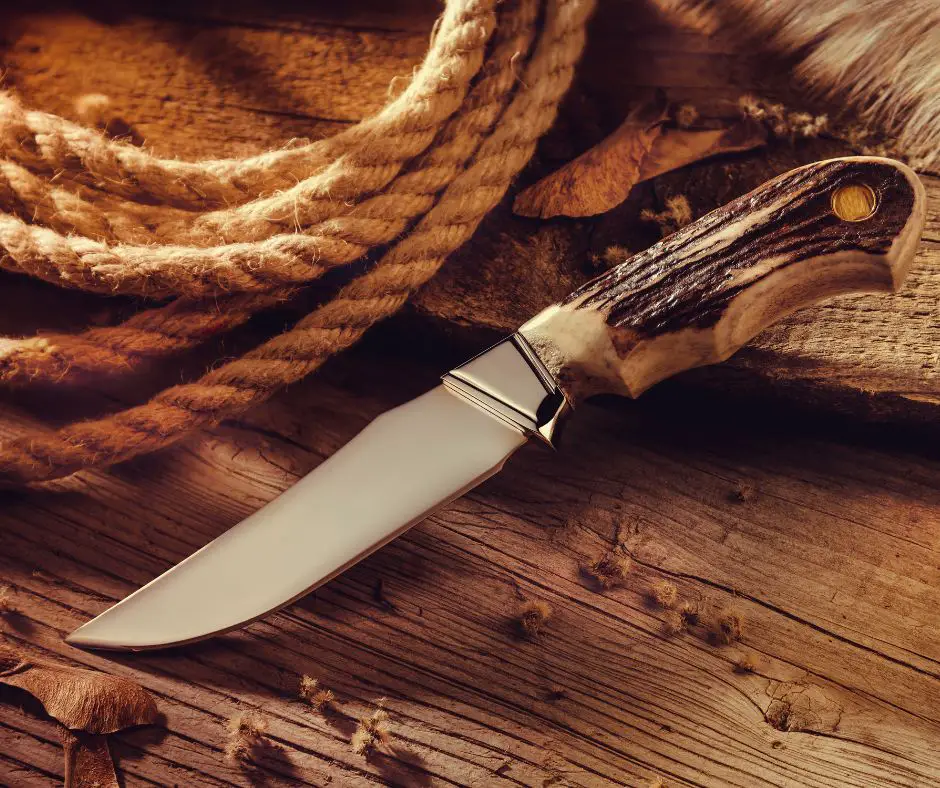
This metal type mainly consists of carbon, iron, chromium, manganese, tungsten, and silver. It is tough. However, heat treatment needs the care to get the best results when making blades.
Alloy steel may not be as hard as other steel alloys, but the best option for bushcraft knives. It is the one distorted the least during the heat treatment process.
Alloy Steel: 01 Pros and cons
| Pros | Cons |
| – Superior strength and hardness – Increased hardenability – Corrosion resistance | – Low machinability – Weldability – Formability |
Stainless Steel: 440 A, B & C
Stainless steel 440 is another good steel material for a bushcraft knife blade. It has the best corrosion or rust-resistant property and is also tougher.
Specifications:
- Ultimate Tensile Strength: 1750 MPa
- Tensile Yield Strength: 1230 MPa
- Hardness (Rockwell): 56-58
- Modulus of Elasticity: 200 GPa
- Charpy Impact: 19.0 J
- Density: 7.6 g/cm³
- Coefficient of Expansion: 10.1 µm/m °C
Stainless Steel: 440 A, B & C have a Rockwell scale of about 56-58 HRC. The carbon content in this steel grade increases with the class, which also affects the hardness. 440A is the softest and the most affordable of the three.
The chemical composition of stainless steel 440 includes carbon, silicon, manganese, chromium, phosphorus, and sulfur.
Stainless steel 440 is easy to sharpen and can maintain its sharpness for a long time. It also has high strength, as can be deduced from its ultimate and tensile strength yields. However, they can be brittle and snap if bent.
Stainless Steel: 440 A, B & C Pros and cons
| Pros | Cons |
| – High corrosion resistance – Good Strength – Ability to obtain and keep excellent hardness and wear resistance | – Low heat resistance |
NedFoss Fixed Blade Knife with leather sheath
- PROFESSIONAL 440C STAINLESS STEEL HUNTING KNIFE: 7" clip-point blade made of high-carbon 440C steel offers superior edge retention & corrosion resistance. Perfect for hunting, camping & survival tasks. More stable & durable than othar knives
- ERGONOMIC HARDWOOD HANDLE DESIGN: Classic hardwood handle with palm swells ensures secure, comfortable grip. Ideal for detailed work & heavy-duty cutting. Combines functionality with aesthetic appeal for outdoor enthusiasts
- PRECISION 7" FIXED BLADE WITH SPECS: Blade: 7" (12.5" overall). 440C steel, 0.16" thickness, 12.7oz. Razor-sharp clip point excels at piercing & cutting. Balances durability & lightweight performance
Stainless Steel: 154CM CPM – Crucible Particle Metallurgy
Stainless steel 154CM CPM has more strength and edge retention abilities. The CPM manufacturing process evenly distributes all the elements in the steel, resulting in tougher, stronger steel.
Specifications:
- Hardness (Rockwell): 58-59
- Density: 7.78 g/cc
- Modulus of Elasticity: 207 GPa (30000 ksi)
- Thermal Conductivity: 168 BTU-in/hr-ft²-°F @Temperature 203 °F
154CM CPM offers better wear resistance and hot hardness. This is good news for knife makers because this metal has excellent edge retention. It can maintain its sharpness over a long period of use.
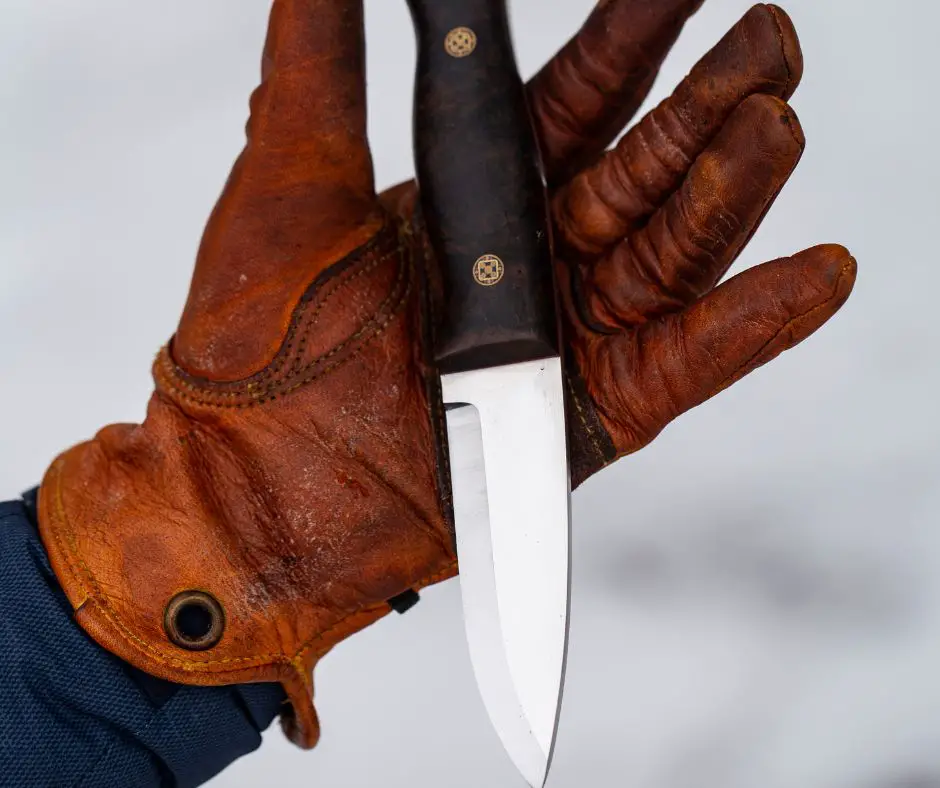
The 154CM CPM is martensitic stainless steel manufactured by Crucible Industries. The company uses the Crucible Particle Metallurgy (CPM) process, which gives the metal its distinctive properties.
It comprises carbon, chromium, manganese, molybdenum, silicon, phosphorus, sulfur, tungsten, and vanadium.
The steel has a relatively high hardness of 58-59 HRC, but it can be hardened further through heat treatment. It also has a perfect balance of hardness and toughness. So, it won’t snap off when using your bushcraft knife outdoors.
Let’s also reiterate the high edge retention and wear resistance of 154CM CPM steel.
154CM CPM Pros and cons
| Pros | Cons |
| – High corrosion resistance – High edge retention ability – Wear resistance – Perfect balance of toughness and hardness – Easy to sharpen | – Not as tough as other steel-grades |
TOPS Knives B.O.B. The Brothers of Bushcraft Fieldcraft B.O.B. Hunter
Carbon Steel: 1095
1095 is the widely used carbon steel because it can be tempered to the desired hardness and toughness. It is the best for beginner knifemakers. This steel grade also has high edge retention.
Specification:
- Rockwell hardness of 55HRC
- Density (lb / cu. in.): 0.284
- Specific Gravity 7.86
- Specific Heat (Btu/lb/Deg F – [32-212 Deg F]): 0.107
- Melting Point (Deg F): 2760
- Thermal Conductivity: 350
- Tensile Strength: 139
- Yield Strength: 84
- Modulus of Elasticity Tension: 30
- Modulus of Elasticity Torsion: 11
1095 belongs to the high carbon alloy of the plain carbon steel family. By design, it is purposefully composed for strength and hardness. It is made of carbon, manganese, phosphorus, and sulfur as the main elements. However, it can tend to be brittle.
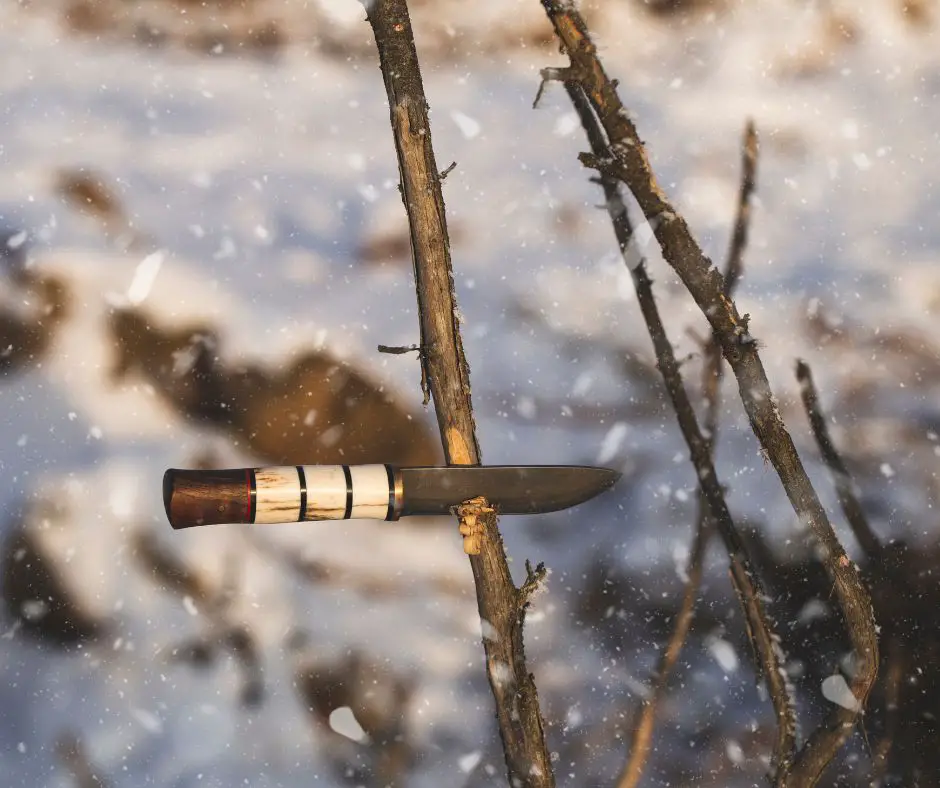
1095 carbon steel is suitable for bushcraft knife blades because of its high edge retention, corrosion resistance, and wear resistance. It is also reasonably easy to sharpen, a property desired in knives for outdoor use.
1095 may not be the best steel for knife making, but it is ideal for beginners. It is easy to work with and has competitive properties.
Carbon Steel: 1095 Pros and cons
| Pros | Cons |
| – Relatively high edge retention abilit – Wear resistanceRelatively tough – Reasonably easy to sharpen | – Prone to rust and corrosion – May chip under impact |
Ontario Knife Co. 8668 Rat-7 Fixed Blade Knife 7″
- Durable: With A 1095 Carbon Steel, Black Powder Coated Blade You Can These Knives Will Stand The Test Of Durability. The Rat Line Bridges The Gap Between Economy, Toughness, And Real-World Features
- Dependable: Quick And Easy Access With The Convenient Molle Compatible Nylon Sheath With Belt Loop Making This Knife Ideal For Edc
- Secure: Equipped With Micarta Ergonomic Handle Slabs For A Comfortable Grip As Well As Jimping For A Secure Finger Grip
Is a Bushcraft Knife Good for Off-Grid Living?
Bushcraft knives are designed for different purposes outdoors. They are survival knives for building shelter, starting a fire, cutting animal hides, wood splitting, and many more! They are, therefore, ideal for off-grid living.
You can use bushcraft knives off-grid for different purposes. Usually, your creativity is the only limit.
Conclusion
A good blade material for a bushcraft knife should have superior strength and hardness and resist corrosion. This type of knife is mainly used outdoors to tackle challenging tasks. We recommend 01 alloy steel as the best product because it has all these properties. However, you can also explore other options.
Thank you for reading this article at Em Offgrid. We appreciate your time and hope you now have the information you were looking for. Kindly share this article and explore our website for related content!
